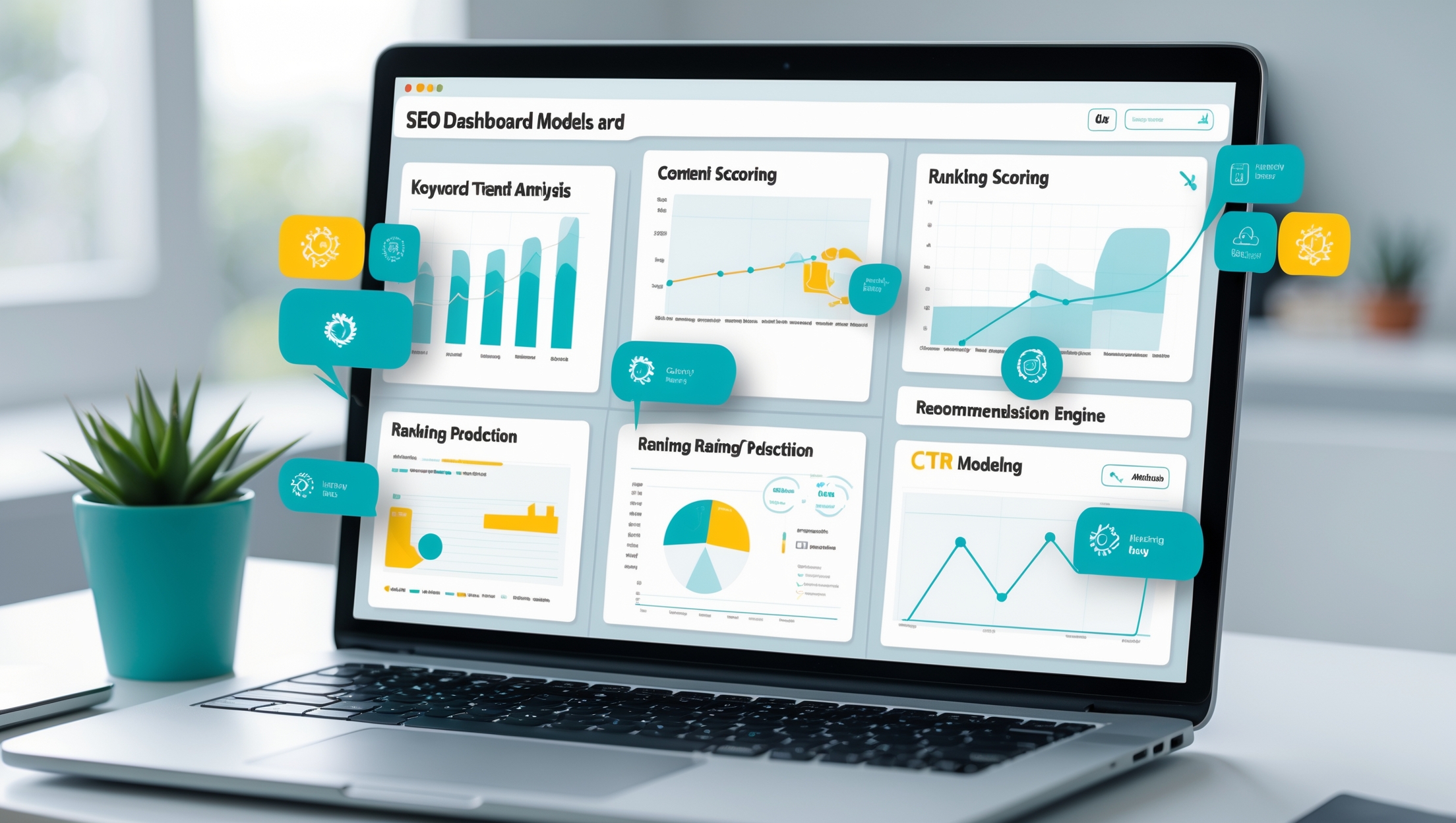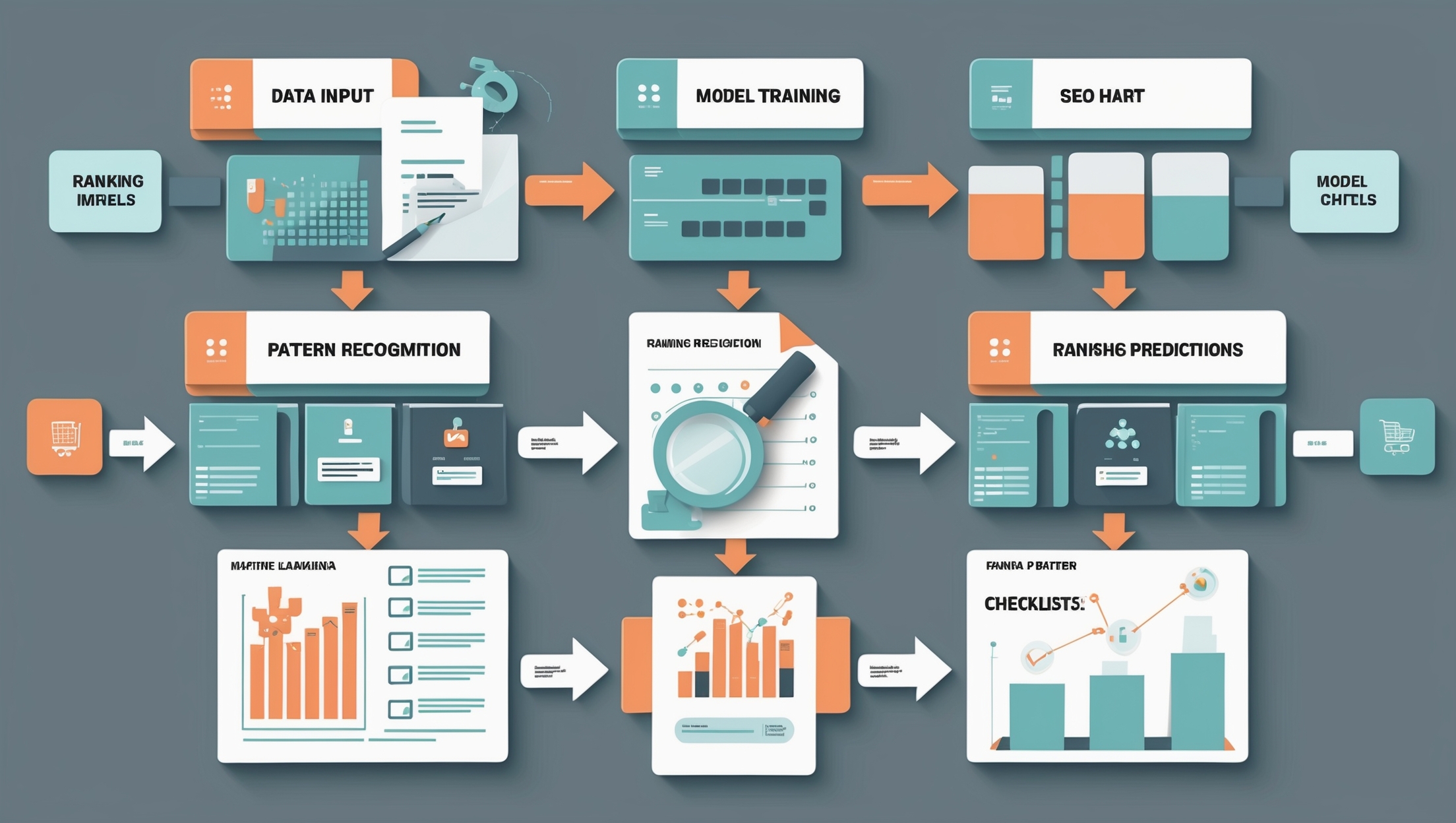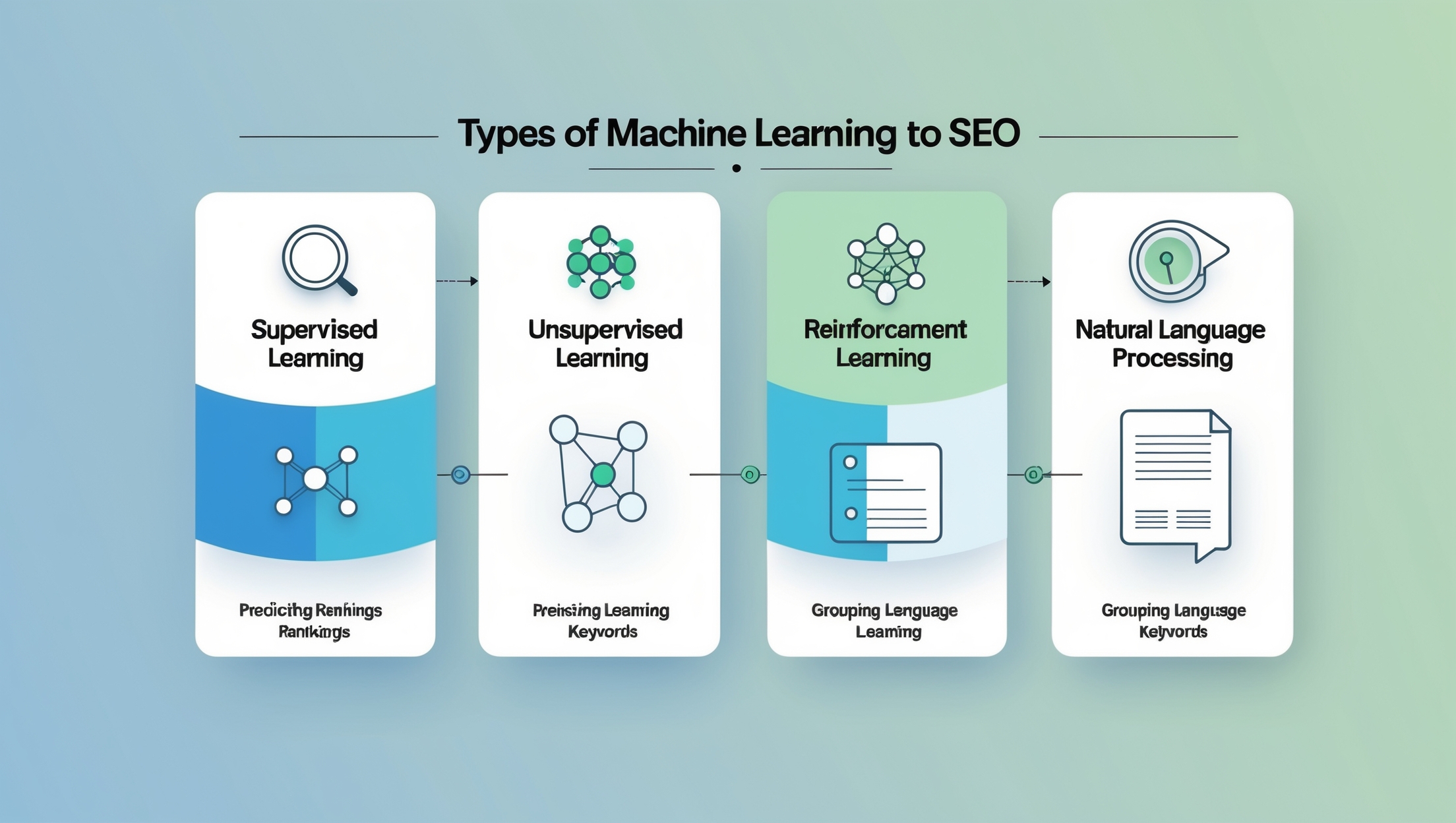Machine Learning Models for Search Engine Optimization

Search engine optimization has come a long way from keyword stuffing and backlink chasing. Today, machine learning models for search engine optimization are changing the game entirely by automating, analyzing, and optimizing strategies with precision.
These models, powered by artificial intelligence, help SEOs uncover patterns, predict search intent, and personalize experiences at scale. If you’re not leveraging AI in SEO, you’re missing out on the competitive edge it brings to everything from content planning to rank tracking.
Beyond traditional analytics, predictive analytics in SEO lets you forecast performance, identify ranking trends, and react to SERP shifts before they impact traffic. It’s no longer just about reacting to data—it’s about predicting outcomes before they happen.
With the right SEO automation tools, even small teams can use machine learning to optimize content, cluster keywords, and analyze user behavior in ways that were impossible a few years ago. The future of SEO isn’t just automated—it’s intelligent.
What Are Machine Learning Models in the Context of SEO?

In the simplest terms, machine learning models for search engine optimization are algorithms trained to make decisions based on patterns in search data. They process everything from keyword trends and content performance to behavioral signals and backlink profiles.
Unlike traditional SEO tools that follow static rules, machine learning adapts as more data becomes available. These systems learn how search engines rank content, how users interact with results, and how to optimize pages accordingly.
Think of it like this: a standard SEO tool tells you where you rank, but a machine learning model can tell you why you're ranking—and what might happen next. It’s not just reporting—it’s strategic forecasting in real time.
Modern machine learning SEO tools include built-in intelligence for content scoring, NLP analysis, and search intent mapping. These tools simulate how search engines think, helping you align your content more closely with what Google is looking for.
Thanks to evolving SEO automation tools, SEOs can now cluster keywords, evaluate semantic gaps, and automate technical fixes without touching a line of code. It’s not just about saving time—it’s about enhancing precision and scale.
And the rise of AI in SEO means that more platforms are integrating machine learning into every stage of the process—from auditing to content creation to forecasting. Whether you’re optimizing a blog or managing enterprise sites, ML is quickly becoming an essential part of the modern SEO toolkit.
Types of Machine Learning Used in SEO

There’s no one-size-fits-all when it comes to machine learning models for search engine optimization. Different types of machine learning are used depending on the problem being solved—some models need labeled data, others work independently, and some learn through trial and error.
1. Supervised Learning
Supervised learning for SEO involves training a model on known inputs and outputs—like identifying what type of content ranks for a specific keyword. It’s used to classify pages, predict ranking outcomes, and even spot spammy backlinks.
A good example is when a tool analyzes thousands of blog posts labeled as “high-ranking” vs. “low-ranking” to learn what separates them. The model then applies this insight to evaluate new content.
This method is precise but requires a clean and labeled dataset. It’s ideal for performance scoring, CTR prediction, and structured content optimization.
2. Unsupervised Learning
Unsupervised learning algorithms find hidden structures in data without needing labels. In SEO, this is especially powerful for clustering similar keywords or grouping user search behaviors.
These models can analyze thousands of search queries and organize them into topic clusters. It’s how many keyword research tools now recommend semantically related terms that match user intent.
Unsupervised learning is also helpful for detecting duplicate or thin content across large sites. Since it doesn’t require training data, it scales easily for enterprise SEO.
3. Reinforcement Learning
Reinforcement learning SEO models improve over time through interaction and feedback. Think of it like teaching an algorithm through rewards—clicks, engagement, and conversions guide its optimization logic.
Search engines like Google likely use reinforcement learning to refine how they rank results based on user behavior. For example, if users consistently click and stay on a lower-ranked result, the model may push it higher.
For SEOs, reinforcement learning shows up in tools that adapt to outcomes—like content testing platforms or personalization engines. These tools don’t just follow rules; they evolve with every user signal.
Core Applications of ML in SEO Workflows
Understanding theory is great, but seeing how machine learning models for search engine optimization work in practice is even better. From keyword research to content scoring, ML is transforming how SEOs work across the board.
1. Keyword Clustering and Mapping

One of the most common uses of keyword clustering AI is to group similar search terms based on semantic patterns—not just matching words. This saves hours of manual sorting and helps you build topic clusters that align with how search engines interpret relevance.
For example, a model might group “best project management software” with “tools for remote teams” because users often click between both. These clusters feed into pillar-page strategies and content silos that boost topical authority.
ML can also suggest variations of keywords based on trends, location, or voice search phrasing. This ensures your keyword research goes beyond volume—it reflects intent.
2. Semantic Content Analysis and Optimization
When it comes to content optimization, semantic analysis in search is where ML shines. These models evaluate how well your content covers a topic—not just with keywords, but with related entities and context.
Tools like Clearscope, MarketMuse, and Surfer use NLP to score your content against top-performing pages. They highlight missing concepts and recommend terms to add for improved semantic depth.
This helps ensure your content aligns with how Google understands meaning—not just what it reads on the page. You’re not stuffing keywords—you’re closing knowledge gaps.
3. Predicting Click Behavior and Engagement
Another core use case is click-through rate prediction. By analyzing past performance, user engagement, and SERP layout, ML models can estimate whether a new title or meta description is likely to attract clicks.
Some tools even A/B test headlines and measure behavioral patterns over time. If one version consistently drives higher dwell time, the system learns to favor it.
These insights aren’t just useful for meta optimization—they guide how you position content from the very first draft. And that’s what makes them a game-changer in modern SEO.
Search Engines and Machine Learning Models
To understand the power of machine learning models for search engine optimization, you have to look at how search engines themselves use them. Google and other engines don’t just use ML—they’re built on it.
Take neural networks SEO as an example. These models mimic how the human brain processes information, allowing search engines to recognize meaning, relationships, and context at a much deeper level.
Google’s RankBrain and BERT are both based on neural network technology. RankBrain helped improve understanding of ambiguous queries, while BERT brought in a new era of interpreting intent from natural language.
Speaking of intent, natural language processing SEO plays a major role in how Google reads content today. NLP enables algorithms to go beyond keywords and truly understand what a page is about, including tone, relationships, and even sentiment.
This means if your content lacks topical depth or semantic structure, it won’t rank—no matter how many backlinks you’ve got. Search engines are prioritizing content that aligns with what users actually want to know, not just what they type.
Under the hood, search ranking algorithms now rely on dozens of ML-based signals. These include freshness, engagement, query complexity, and user history—all filtered and weighted through machine learning models.
The result? No two people may see the same SERP for the same query. That’s why optimizing for broad relevance and user satisfaction—not just keywords—is more important than ever.
For SEOs, the takeaway is clear: if search engines are driven by machine learning, our strategies should be too. Understanding the models behind the rankings gives you the power to predict, influence, and stay ahead of the curve.
Tools and Platforms Using Machine Learning in SEO
You don’t need to be a data scientist to take advantage of machine learning models for search engine optimization. Today’s SEO platforms are increasingly built with ML at their core, making advanced insights accessible—even for non-technical marketers.
These machine learning SEO tools help automate research, forecasting, content scoring, and optimization. They’re designed to make better decisions faster—by identifying patterns humans often miss.
Surfer SEO and MarketMuse use machine learning to analyze SERPs and recommend how to structure your content. They evaluate keyword depth, related topics, and NLP signals to deliver a real-time content score you can improve before publishing.
Clearscope uses AI-powered SEO insights to break down what top-performing content does well—helping you match or outperform your competitors semantically. It’s especially useful for teams that want scalable, editorial-friendly optimization.
On the technical side, SEOTesting and Screaming Frog have introduced ML-powered features like change tracking, ranking impact testing, and anomaly detection. These tools let you test variations and forecast impact, making them invaluable for large-scale SEO programs.
Some teams even build custom workflows by combining SEO automation tools with platforms like ChatGPT, Google Cloud AutoML, or Python libraries like Scikit-learn. These setups can perform keyword clustering, title tag testing, and even automated content briefs.
If you're visual-first, AI-powered SEO dashboards in Looker Studio or Tableau can plug into your ML workflows. You can track performance, forecast outcomes, and surface insights across hundreds of URLs in one place.
The real benefit? These tools not only save time—they make your SEO strategy smarter. You're not just reacting to rankings anymore—you’re predicting and shaping them with data-driven precision.
Behavioral Modeling and Personalization
One of the most powerful uses of machine learning models for search engine optimization is how they analyze and respond to user behavior. Instead of optimizing for a general audience, you can now optimize based on how real people interact with your content.
This is where behavioral signal analysis comes into play. These models track signals like bounce rate, dwell time, scroll depth, and even click patterns to understand which content truly engages your visitors.
Imagine knowing not just what people searched, but why they clicked your link—and how long they stayed before bouncing. That’s data traditional analytics tools don’t fully capture, but machine learning can.
This insight is critical for user intent modeling. Rather than guessing whether a query is informational, navigational, or transactional, ML systems classify intent based on user pathways, query phrasing, and SERP features.
For example, a user searching “best credit cards for travel” is likely closer to purchase than one searching “how do credit cards work.” ML tools can identify this nuance and help tailor content accordingly.
Search engines use this logic too. Through natural language processing SEO, they interpret not just the words used, but the implied context—like urgency, comparison, or curiosity.
That means your content needs to mirror how your audience thinks, not just what they type. And with behavioral modeling, you can train your SEO strategy to evolve with your users, not behind them.
The best part? This personalization isn’t just good for rankings—it improves user satisfaction, time on page, and ultimately, conversions. Machine learning doesn’t just help search engines understand users—it helps you do the same, at scale.
The Future of Machine Learning in SEO
We’re just scratching the surface of what machine learning models for search engine optimization can do. As search engines become more conversational and dynamic, ML will move from being a competitive edge to an absolute requirement.
One of the biggest shifts will be the rise of predictive analytics in SEO. Instead of reacting to traffic drops or keyword losses, SEOs will use AI-powered forecasts to adjust strategies weeks—or even months—in advance.
Imagine a system that analyzes user trends, competitor behavior, and algorithmic shifts, then alerts you before your rankings fall. That’s not a far-off dream—it’s already happening in tools that combine analytics with ML forecasting.
Another major frontier is reinforcement learning SEO. These systems learn in real-time by observing user behavior and adjusting content or UX elements accordingly, much like how Google tests different SERP layouts or featured snippets on the fly.
As reinforcement learning matures, websites will become smarter about delivering content that adapts to audience behavior—automatically optimizing itself with minimal human input. Think dynamic content blocks that restructure themselves based on who’s viewing the page and what device they’re on.
We’ll also see deeper integration of AI in SEO across CMS platforms, voice search, and visual search environments. Content creators may get instant feedback on optimization, tone, structure, and rank potential as they write.
In the future, ML won’t just analyze performance—it will help design SEO strategies from the ground up. Whether it's predicting which content pillars will succeed or auto-generating semantic clusters tied to your business goals, machine learning is set to become your most valuable SEO teammate.
The takeaway? SEOs who understand and adopt these evolving models will be able to scale smarter, personalize better, and stay well ahead of their competition.
Getting Started: How SEOs Can Use ML Without Writing Code
You don’t need to be a developer or data scientist to benefit from machine learning models for search engine optimization. Thanks to modern tools, SEOs can now tap into ML-powered insights using intuitive dashboards and prebuilt workflows.
Start with user-friendly SEO automation tools like Surfer SEO, Clearscope, or MarketMuse. These platforms use machine learning behind the scenes to evaluate keyword coverage, semantic relevance, and competitive gaps—all without you needing to understand algorithms.
Want to cluster keywords by intent or topic? Try tools like Keyword Insights or Frase that offer drag-and-drop interfaces powered by machine learning SEO tools. In just a few clicks, you can generate topic maps or outline content silos optimized for both users and search engines.
For those focused on performance, plug into AI-powered SEO insights using tools like SEOTesting, Semrush, or even Looker Studio with GA4 integrations. These help you monitor ranking volatility, test metadata changes, and automate page-level optimization reports.
Another beginner-friendly method is using prompt-based platforms like ChatGPT or Claude to simulate keyword expansion, create outlines, or summarize ranking gaps. With the right prompt, you can mimic ML-powered analysis in a more conversational, accessible way.
Still feeling limited? Tools like Google AutoML, MonkeyLearn, and Zapier integrations allow you to create custom, no-code machine learning workflows that fit your specific SEO goals.
The trick isn’t learning the code—it’s learning how to think like a machine learning strategist. Start small, apply one ML-powered insight per week, and grow from there.
Before long, you’ll be predicting trends, identifying ranking risks, and scaling content strategy faster than ever—all without needing to build your own model from scratch.
FAQs: Machine Learning Models in SEO
1. What are machine learning models for search engine optimization?
These are AI systems trained to analyze search data, identify ranking patterns, and improve SEO performance. They help automate keyword clustering, content scoring, and behavior analysis.
2. How do search engines use machine learning?
Google uses models like RankBrain and BERT to understand user intent, personalize results, and refine relevance. These rely on natural language processing SEO and neural networks.
3. Do I need to know coding to use machine learning for SEO?
Not at all. Many machine learning SEO tools have user-friendly interfaces and dashboards, allowing you to access advanced insights without writing a single line of code.
4. What’s the difference between ML and AI in SEO?
AI is the broader category, while machine learning is a specific method where algorithms learn from data. ML powers many AI-powered SEO insights you see in tools today.
Conclusion
Machine learning isn’t just influencing how search engines work—it’s shaping how we do SEO every day. From predictive analytics in SEO to keyword clustering and CTR modeling, these technologies are changing what’s possible for content teams and strategists.
Whether you’re optimizing blog posts or leading technical audits, machine learning models for search engine optimization help you make smarter, faster decisions. You’re not just responding to rankings—you’re anticipating them with data-driven precision.
Thanks to modern SEO automation tools, tapping into these models doesn’t require a PhD or a Python script. You just need the right mindset, the right tools, and the curiosity to explore what AI in SEO can unlock for your brand.
The future isn’t about outsmarting the algorithm—it’s about learning to work with it. Machine learning gives you the edge to do just that.

